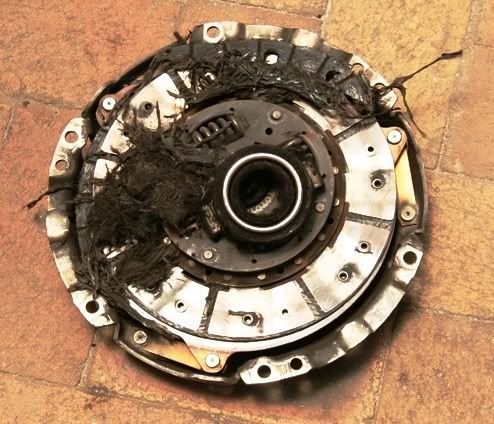Took the car to the dyno a few months ago and one of the new employees insisted he drive the car onto the dyno. "I get paid to do that..."
Ass-clown has all 4 wheels snug against the rollers and he's trying to ease it up on top of them. Instead of backing up a few feet and getting a running start, he rides the clutch mercilessly until it's smoking..
Fast forward to this month and the car is shifting like crap, the clutch engagement is weird and it sounds like canvas rubbing on canvas.
Removal shows that all rivets have quit. Melted???
Flywheel and pressure plate are both fine, although I will replace them. I thought a lot of S50's were running the OEM Sachs clutch?
Edit: Consensus seems to be that the rivets failed from mechanical stress, not from heat..
Ass-clown has all 4 wheels snug against the rollers and he's trying to ease it up on top of them. Instead of backing up a few feet and getting a running start, he rides the clutch mercilessly until it's smoking..
Fast forward to this month and the car is shifting like crap, the clutch engagement is weird and it sounds like canvas rubbing on canvas.
Removal shows that all rivets have quit. Melted???
Flywheel and pressure plate are both fine, although I will replace them. I thought a lot of S50's were running the OEM Sachs clutch?
Edit: Consensus seems to be that the rivets failed from mechanical stress, not from heat..


Comment